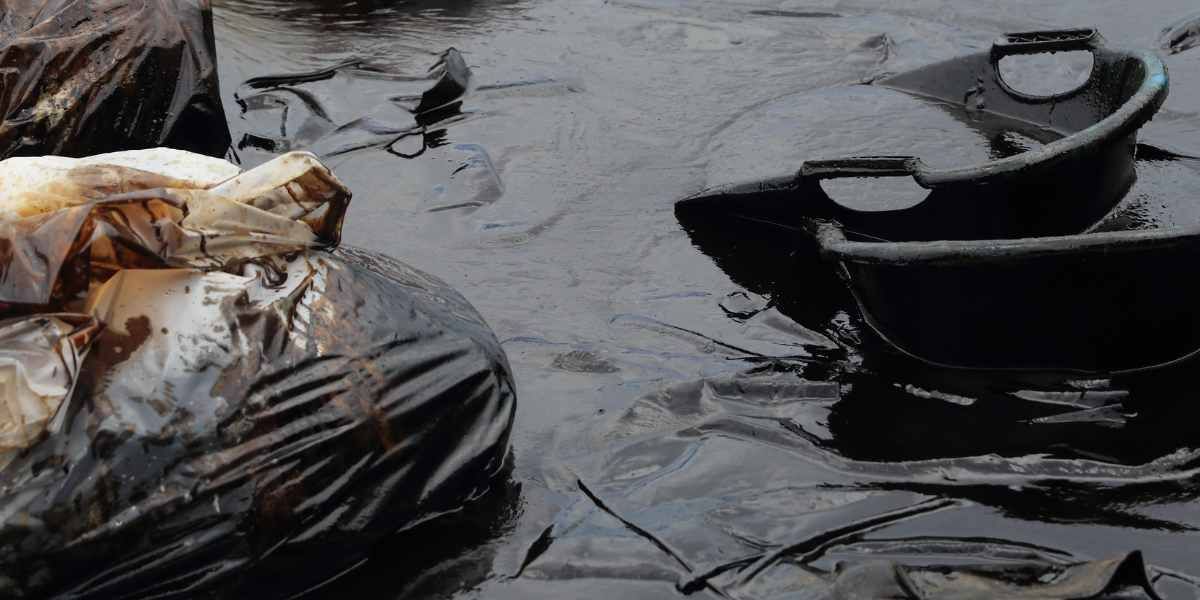
Email: jberger@ertitraining.com
Phone: 541-740-4241
From Chaos to Clean Waters: Effective Steps for Cleaning Up After a Waste Spill
Water pollution is a critical issue that affects our health, environment, and economies. When a waste spill occurs, the consequences can be devastating for local communities, wildlife, and ecosystems.

For environmental activists, government bodies, and local communities, understanding the clean-up process is crucial. This blog post dives into the essential steps for tackling water pollution after a waste spill, offering practical tips and insights for effectively restoring contaminated waters.
Read on to learn about the phases of clean-up, the tools and technologies involved, and the collaborative efforts required to ensure a thorough and efficient response to waste spills.
Recognizing the Severity of the Spill
When waste spills contaminate water bodies, the first step is to assess the severity of the spill. Initial recognition involves identifying the type of pollutant, its concentration, and its spread. This sets the stage for all subsequent actions and decisions.
Environmental assessment teams measure pollutant levels and their potential impact on human health and the ecosystem. Immediate containment measures are implemented to prevent further contamination, which may involve deploying booms or absorbent barriers to limit the pollutant's spread.
The initial assessment also includes identifying the source of the spill. Understanding how and why the spill occurred helps in developing strategies to prevent future incidents and mitigate immediate damage. Quick identification and response are crucial in minimizing long-term environmental impact.
Immediate Containment Measures
Once the spill is identified, immediate containment measures must be taken. This involves using equipment such as booms, skimmers, and absorbent materials to prevent the spread of pollutants. Containing the spill quickly reduces the affected area and prevents the contamination from reaching larger water bodies.
Booms are floating barriers that help contain the spill, while skimmers are used to remove pollutants from the water's surface. Absorbent materials can soak up oil and other pollutants, preventing them from dispersing further. These tools are essential for managing the initial stages of a spill response.
Effective containment relies on a well-coordinated effort among responders. Quick deployment of containment tools and continuous monitoring ensures that the pollutant does not spread unchecked. The effectiveness of these measures can significantly reduce the overall impact of the spill.
Assessing Environmental Impact
Understanding the environmental impact of a waste spill is crucial for effective clean-up. Assessments determine the extent of damage to water quality, aquatic life, and surrounding ecosystems. This information guides the development of targeted clean-up strategies.
Biologists and environmental scientists conduct surveys to evaluate the impact on local flora and fauna. They assess the toxicity levels of pollutants and their potential long-term effects on the ecosystem. This data helps prioritize clean-up efforts and allocate resources effectively.
Impact assessments also involve water quality testing. Analyzing water samples for contaminants provides a clear picture of the pollution levels and helps track the progress of clean-up efforts. Continuous monitoring ensures that clean-up strategies remain effective and adaptive to changing conditions.
Mobilizing Clean-up Teams
Effective clean-up requires a coordinated effort from various stakeholders. Mobilizing clean-up teams involves assembling skilled personnel, allocating resources, and ensuring that all necessary equipment is available. This step is crucial for a timely and efficient response.
Clean-up teams typically include environmental experts, technicians, and local volunteers. Each member plays a specific role, from operating equipment to conducting environmental assessments. Clear communication and coordination among team members enhance the overall efficiency of the clean-up process.
Resource allocation is another critical aspect of mobilizing clean-up teams. This involves securing funding, obtaining necessary permits, and ensuring that all materials and equipment are readily available. Proper planning and resource management are essential for successful clean-up operations.
Deploying Technology and Equipment
Modern technology plays a vital role in water pollution clean-up. Deploying advanced equipment and innovative solutions can significantly enhance the efficiency and effectiveness of the clean-up process.
Remote sensing technology, such as drones and satellites, provides real-time data on the spill's extent and movement. This information helps responders make informed decisions and adjust their strategies accordingly. Remote sensing also allows continuous monitoring of the affected area, ensuring that clean-up efforts remain effective.
Other technologies, such as water treatment systems and bioremediation, help remove contaminants from the water. Water treatment systems use chemical and physical processes to purify water, while bioremediation involves using microorganisms to break down pollutants. These technologies are essential for restoring water quality and protecting the environment.
Engaging Local Communities
Local communities play a crucial role in the success of clean-up efforts. Engaging with residents and local organizations fosters collaboration and ensures that clean-up strategies align with community needs and priorities.
Public meetings and information sessions provide a platform for community members to voice their concerns and contribute to the clean-up process. These interactions help build trust and ensure that clean-up efforts address the specific needs of the affected communities.
Community engagement also involves recruiting local volunteers to assist with clean-up efforts. Volunteers can help with tasks such as monitoring water quality, removing debris, and planting vegetation to restore ecosystems. Their involvement not only enhances the clean-up process but also fosters a sense of ownership and responsibility for protecting the environment.
Monitoring and Reporting Progress
Continuous monitoring and transparent reporting are essential for ensuring the effectiveness of clean-up efforts. Regular updates on the progress of clean-up operations keep stakeholders informed and accountable.
Monitoring involves conducting regular water quality tests and environmental assessments to track the progress of clean-up efforts. This data helps identify any new or persistent issues and allows responders to adjust their strategies accordingly. Continuous monitoring ensures that clean-up efforts remain effective and adaptive to changing conditions.
Reporting progress to stakeholders, including government agencies, environmental organizations, and the public, promotes transparency and accountability. Regular updates on clean-up activities, challenges, and successes build trust and demonstrate a commitment to environmental protection.
Collaborating with Government Agencies
Government agencies play a vital role in supporting and regulating water pollution clean-up efforts. Collaboration with these agencies ensures that clean-up operations comply with legal requirements and benefit from available resources and expertise.
Agencies such as the Environmental Protection Agency (EPA) provide guidelines and regulations for managing waste spills. These guidelines help ensure that clean-up efforts follow best practices and protect public health and the environment. Compliance with regulatory requirements is essential for the success and legality of clean-up operations.
Government agencies also provide funding and technical support for clean-up efforts. Grants, financial assistance programs, and access to specialized equipment and expertise enhance the capacity of clean-up teams. Collaboration with government agencies strengthens clean-up efforts and ensures a comprehensive response to waste spills.
Restoring Affected Ecosystems
Restoring affected ecosystems is a critical component of the clean-up process. This involves rehabilitating damaged habitats, reintroducing native species, and implementing measures to prevent future contamination.
Habitat restoration includes activities such as planting vegetation, rebuilding wetlands, and creating buffer zones to protect water bodies. These efforts help stabilize soil, reduce erosion, and provide habitats for wildlife. Restoration projects enhance the resilience and biodiversity of ecosystems, promoting their recovery and long-term health.
Reintroducing native species is another important aspect of ecosystem restoration. This involves restocking fish populations, planting native vegetation, and controlling invasive species. Reintroduction efforts help restore the natural balance of ecosystems and support the recovery of local flora and fauna.
Preventing Future Spills
Preventing future waste spills is essential for protecting water quality and the environment. Implementing preventive measures and promoting a culture of environmental stewardship reduce the risk of spills and their impact.
Preventive measures include regular maintenance and inspection of infrastructure, such as pipelines and storage tanks, to identify and address potential issues. Implementing safety protocols and emergency response plans also enhances preparedness and minimizes the impact of spills.
Promoting a culture of environmental stewardship involves raising awareness about the importance of protecting water resources and encouraging responsible practices. Education and outreach programs, industry partnerships, and community initiatives foster a collective commitment to preventing pollution and safeguarding the environment.
Leveraging Public-Private Partnerships
Public-private partnerships (PPPs) offer a collaborative approach to addressing water pollution and waste spills. These partnerships leverage the strengths and resources of both public and private sectors to enhance clean-up efforts and promote sustainable practices.
PPPs involve collaboration between government agencies, private companies, and non-governmental organizations (NGOs) to address water pollution challenges. These partnerships facilitate resource sharing, knowledge exchange, and coordinated action. By working together, stakeholders can achieve more comprehensive and effective clean-up outcomes.
Private companies play a crucial role in PPPs by providing funding, expertise, and innovative solutions. For example, technology companies can offer advanced monitoring and treatment technologies, while industries can invest in sustainable practices and infrastructure improvements. Government agencies and NGOs contribute regulatory oversight, technical support, and community engagement, ensuring that clean-up efforts align with public interests and environmental goals.
In Conclusion
Water pollution from waste spills poses significant challenges to environmental health and community well-being. However, effective clean-up strategies and collaborative efforts can mitigate the impact and restore affected water bodies. By recognizing the severity of spills, mobilizing clean-up teams, deploying technology, engaging local communities, and collaborating with government agencies, we can achieve comprehensive and sustainable clean-up outcomes. Preventing future spills and leveraging public-private partnerships further enhance our ability to protect water resources and promote environmental stewardship.
Together, we can transform chaos into clean waters and create a healthier, more sustainable future for all. For those looking to take their commitment to the next level, consider joining forces with experts and organizations dedicated to environmental protection and clean-up efforts. Your involvement can make a meaningful difference in safeguarding our precious water resources.









